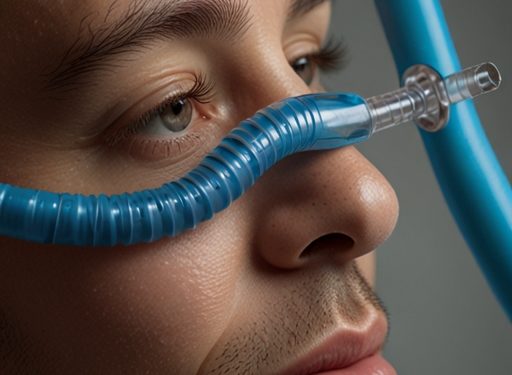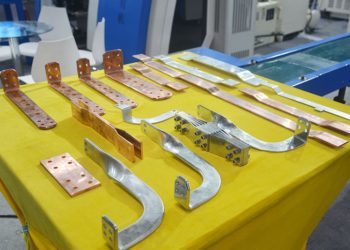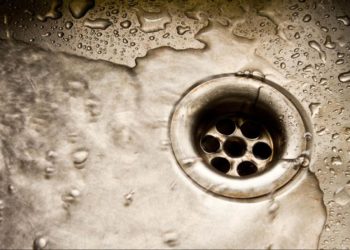Surgical procedures have been revolutionized through minimally invasive surgeries since they enable the doctors to snoop into the human body and correct the foul play without causing a lot of harm to the organisms. Organizationally situated at the center of these revolutionary methods are the insertion tubes and light guide bundles, two critical instruments that have brought about the principles of accuracy, safety, and positive results among patients.
The Role of Insertion Tubes in Modern Surgery
It was observed that the insertion tubes are flexible tubes capable of moving through the human body comfortably since they are built to last. These tubes in the field of least invasive surgery as conduits for passing of instruments and light sources besides cameras. Insertion tubes should be designed in such a manner that they are flexible to reach out of the operational area but simultaneously strong enough not to harm any tissue during the surgery.
These tubes have taken over works such as endoscopies in which surgeons can see the interiors of organs without extensive cutting. Insertion tubes offer the structural frame, which makes this visualization possible. Incorporation of light guide bundles that guides light into the body enables surgeons to see profound and makes them work more accurately.
Understanding the Light Guide Bundle and Its Importance
Light guide bundle also has an equivalent importance in achieving success in the minimally invasive surgery. It is made of fibers that convey light from an outside source through the body of the human being. This light is very crucial in ensuring that surgeons get adequate lighting to the operation area.
Surgeons used to encounter multiple difficulties with visibility prior to the usage of light guide bundles: artificial light failed to provide sufficient illumination for refined procedures. Light guide bundles have made it possible to do away with such visibility challenges as they have provided surgeons with real-time visibility. From addressing diseases to rather physical tasks like taking out objects from a patient’s body, this technology makes it possible for surgeries to be done as accurately as possible.
How Insertion Tubes and Light Guide Bundles Work Together
Insertion tubes and light guide bundles are closely related components which are an essential component of devices such as endoscopes. In an endoscope, the insertion tube physically guides the camera and introduces various operation tools while the light guide realizes the lighting of the area under inspection. Combined, they help make surgeries quicker, safer, and less invasive than they otherwise would be.
For example, in gastrointestinal endoscopies the insertion tube is inserted into the body’s interior and the light guide bundle illuminates the area being examined in real time. This helps to avoid rendering surgeries doubtful and risky for the patients by trying to conduct exploratory surgeries. This combination has supported the medical field in the manner in which difficult methods are executable without vast amounts of trauma.
Advancements in Insertion Tube Materials and Design
The rise and development of the insertion tubes have undergone profound changes in the type of materials that it is made of. In earlier models, the insertion tubes were fixed and brittle structures which often snapped under pressure; but in today’s models the insertion tubes are made from polymers and metals which make the tubes very flexible whilst at the same time being stronger. This feature enables the endoscopic surgeon to carry out movements on the tube within the body without concern of affecting vital organs.
Also, another advancement is that thickness of insertion tubes has also been reduced bringing procedures yet more minimally invasive. These thin tubes can weave between horseshoe kidney shaped bodies, thus pave way for more sensitive surgeries. Due to great advancements made for incorporating light guide bundles, surgeons can practically access part of the body that was considered dangerous to work on.
The Global Impact of Insertion Tubes in Minimally Invasive Surgery
It will not be an overstatement to say that insertion tubes and light guide bundles have revolutionized the field of minimally invasive surgery. All these technologies have been embraced by hospitals in different parts of the world thus enhancing the patient’s recovery period and general well-being. Almost all surgeries that used to need a long hospitalization can today be done on a day to day basis due to these inventions.
In addition, such tools have led to increased availability of surgeries in the developing nations where calls for original surgeries might not be well developed. It can therefore be said that the flexibility, workings and high insertion tubes have been invaluable in availing many lives globally especially in the developing countries where some of the complex surgeries cannot be easily accessed.
Benefits for Patients and Medical Professionals
Patients certainly benefit from advances in insertion tubes and light guide bundles. Shorter recovery times; reduced risk for surgery; and high patient satisfaction characterize it. Among the implications of reduced invasiveness is lesser complications, less scarring, and faster return to daily activities.
These instruments benefit the clinical practice of surgeons and make the whole surgical process easier. Due to such instruments, the surgeries become more efficient while large teams within the surgical process or long times in the operating room are cut off. Efficiency brings better patient results, and the cost of surgery is lowered, making health care more affordable worldwide.
The Future of Insertion Tubes and Light Guide Bundles
With improvements in technology, the future of insertion tubes and light guide bundles is bright. Research already underway concerns their flexibility, strength, and optical clarity. Nanotechnology combined with future breakthroughs in materials science should be able to yield even smaller and more efficient devices capable of reaching more areas in the human body.
In the immediate future, the application of insertion tubes and light guide bundles in robotic-assisted surgeries will be at its peak. They could allow for even finer precision since the robotic arm’s movements are controlled to a point that they may approximate near zero the margin of error.
Conclusion
They are undoubtedly one of the most remodeling tools in modern medicine. Insertion tubes and bundles of light guides have molded surgical landscapes worldwide and made it revolutionize minimally invasive techniques as a new methodology that allows medical professionals to approach complicated procedures with newer safety, better speed, and more effectiveness. The technological prowess holds incredible possibilities for further development of these tools with even more breakthroughs in surgical care around the world.
Using these elements, the surgeons are not only advancing quality care but also developing new standards on how medical innovation is meant to change the way healthcare will be treated in the future.









































































